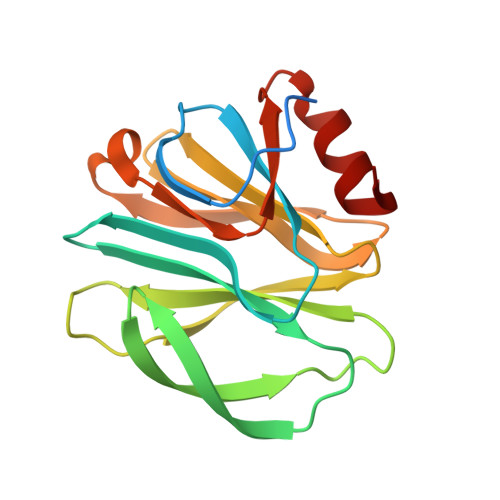The Rhesus Rotavirus VP4 Sialic Acid Binding Domain has a Galectin Fold with a Novel Carbohydrate Binding Site
Dormitzer, P.R., Sun, Z.-Y.J., Wagner, G., Harrison, S.C.(2002) EMBO J 21: 885-897
- PubMed: 11867517
- DOI: https://doi.org/10.1093/emboj/21.5.885
- Primary Citation of Related Structures:
1KQR, 1KRI - PubMed Abstract:
Cell attachment and membrane penetration are functions of the rotavirus outer capsid spike protein, VP4. An activating tryptic cleavage of VP4 produces the N-terminal fragment, VP8*, which is the viral hemagglutinin and an important target of neutralizing antibodies. We have determined, by X-ray crystallography, the atomic structure of the VP8* core bound to sialic acid and, by NMR spectroscopy, the structure of the unliganded VP8* core. The domain has the beta-sandwich fold of the galectins, a family of sugar binding proteins. The surface corresponding to the galectin carbohydrate binding site is blocked, and rotavirus VP8* instead binds sialic acid in a shallow groove between its two beta-sheets. There appears to be a small induced fit on binding. The residues that contact sialic acid are conserved in sialic acid-dependent rotavirus strains. Neutralization escape mutations are widely distributed over the VP8* surface and cluster in four epitopes. From the fit of the VP8* core into the virion spikes, we propose that VP4 arose from the insertion of a host carbohydrate binding domain into a viral membrane interaction protein.
- Laboratory of Molecular Medicine, Enders 673, Children's Hospital, 320 Longwood Avenue, Boston, MA 02115, USA. dormitze@crystal.harvard.edu
Organizational Affiliation:



















